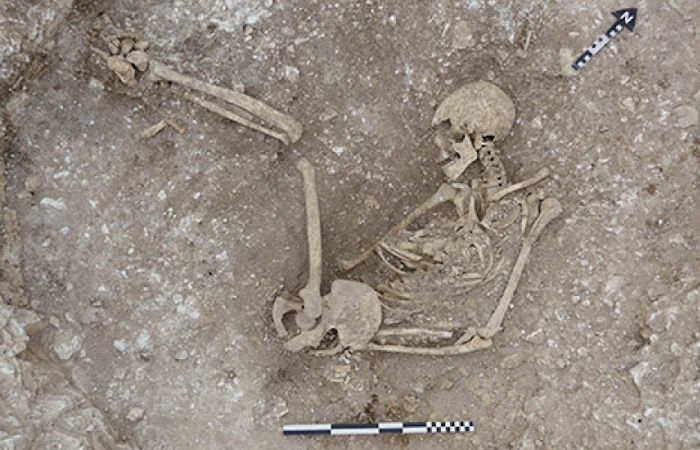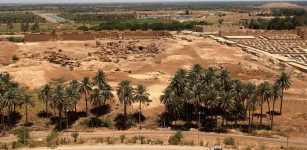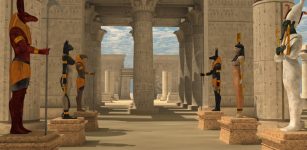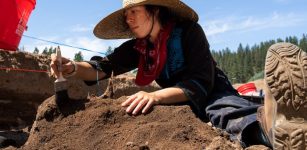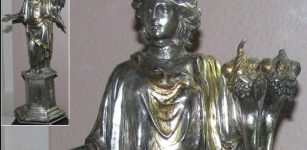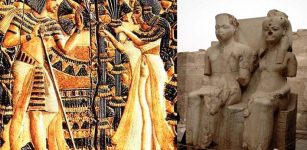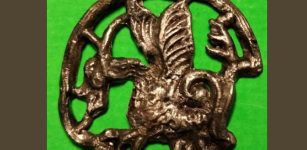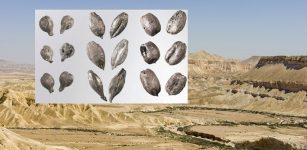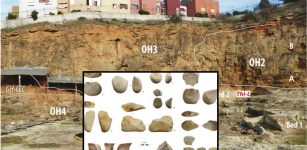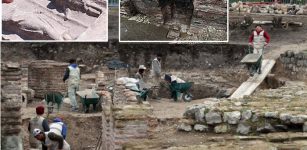Unusual Iron Age Cemetery Discovered In Dorset, UK
Jan Bartek - AncientPages.com - Archaeology students from Bournemouth University have found the remains of prehistoric people and animal sacrifices in a recently discovered Iron Age settlement in Dorset.
The site, which consists of typical Iron Age round houses and storage pits was discovered by archaeology students last September in Winterborne Kingston, Dorset. It dates from around 100 years BC, well before the Roman invasion of Britain.
Credit: Bournemouth University
Over the course of the last three weeks, a team of 65 students from university have been excavating the site. During this time, they uncovered the bodies of women and men as well as animal body parts in storage pits originally used to hold grain.
“Sites across Dorset in the Late Iron Age are unique because the communities here buried their dead in defined cemeteries,” explained Dr Miles Russell, an Archaeologist at Bournemouth University who is leading the dig. “Elsewhere in the country they would either be cremated or placed in rivers, but in Dorset it seems they did things rather differently.”
The bodies were found in crouched positions in oval shaped pits and had been buried with joints of meat and pottery bowls originally containing drinks.
Credit: Bournemouth University
The discovery of prehistoric people who lived on the site and items from their everyday lives is providing the team with fascinating new clues about Iron Age lifestyle.
“We know a lot about life in Britain during and after the Roman invasion because so much has been written down,” said Dr Russell. “But we do not have anything written about life before, the answers to how they lived come solely from what we find in the ground.”
Teams of students and staff from the University have been surveying and excavating sites in the local area for several years. In 2015 they carried out an excavation of a large iron age town which they named "Duropolis" after the Durotriges tribes who lived in the region. The settlement they are working on today is situated about half a mile to the north of Duropolis.
In particular, the latest discoveries will help archaeologists understand more about religious practices in communities at the time.
Credit: Bournemouth University
“The animal remains that we’re finding placed in the bottom of pits would have provided weeks of food for this settlement, so it’s a significant sacrifice to their gods to bury so much in the ground. In some pits, animal parts had been placed onto and together with other animals, for example we found a cow’s head on the body of a sheep.
“We don’t know why they would have done this, to us it’s frankly bizarre, but it’s a fascinating new insight into their belief systems,” explained Dr Russell.
Credit: Bournemouth University
Archaeology student Nathan Sue has been cleaning and preserving the finds from the settlement, including pottery, animal bones and items of jewellery.
“Some of the most exciting finds we have excavated from the dig include a ring that we found on someone’s finger in an associated burial. It is a copper alloy, perhaps bronze and it’s nice to find that as rings of this age are not common,” Nathan said.
See also: More Archaeology News
The excavation will continue for another week and the human bone will be analysed at Bournemouth University before eventually being returned to the ground. The University team will then continue to survey and scan the area of East Dorset for further settlement activity that could reveal more secrets about life in pre-Roman Britain.
Written by Jan Bartek - AncientPages.com Staff Writer

